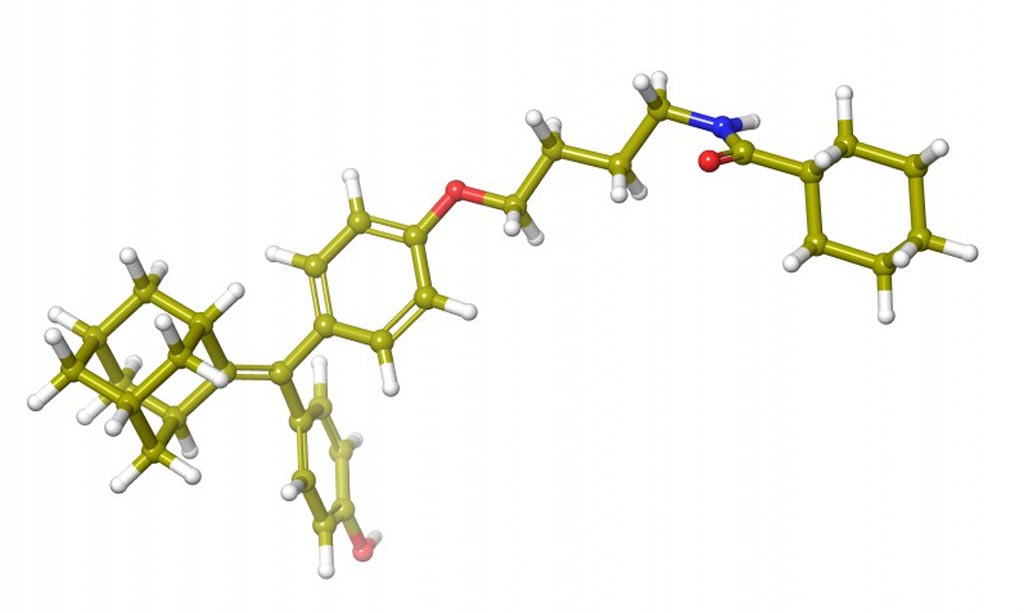Molecular Scaffolds Promise Drug Synthesis in Breast Cancer Treatment
By LabMedica International staff writers
Posted on 16 Oct 2018
A recently developed class of molecular scaffolds for treatment of breast cancer promises to facilitate the synthesis of drugs capable of degrading or inhibiting estrogen receptors (ERs).Posted on 16 Oct 2018
Drug developers have been searching for compounds with selective estrogen receptor degrader (SERD) and ER antagonistic properties for many years. A SERD is a type of drug that binds to the ER and, in the process of doing so, causes the ER to be degraded and thus downregulated. They are used to treat estrogen receptor-sensitive or progesterone receptor-sensitive breast cancer, along with older classes of drugs like selective estrogen receptor modulators (SERMs) and aromatase inhibitors. To date, the only SERD approved for marketing in the USA has been Fulvestrant, which works by binding to the ER and destabilizing it, causing the cell's normal protein degradation processes to destroy it.

Image: A diagram of a fundamentally new molecule that can halt proliferation and growth of breast cancer cells in the laboratory (Photo courtesy of the Stevens Institute of Technology).
Investigators at the Stevens Institute of Technology (Hoboken, NJ, USA) reported in the August 9, 2018, issue of the journal ACS Medicinal Chemistry Letters that they had developed new classes of scaffolds that possess SERD and ER antagonistic properties. These novel SERDs potently inhibited MCF-7 breast cancer cell proliferation and the expression of ER target genes, and their efficacy was comparable to Fulvestrant.
Unlike Fulvestrant, the modular protein-targeted chimera (PROTAC)-type design of these novel SERDs is expected to allow easy diversification into a library of analogs to further fine-tune their pharmacokinetic properties including oral availability. In addition, this will tend to expand the pool of currently available PROTAC-type scaffolds that could be beneficial for targeted degradation of various other therapeutically important proteins.
“The unique benefit of our compounds is that this is a fundamentally different type of structure that was previously not known to degrade or inhibit estrogen receptors,” said senior author Dr. Abhishek Sharma, professor of chemistry at the Stevens Institute of Technology. “It is not a tweak of an existing drug; it works in a completely different way. We consider these results to be very promising. This is a novel molecular structure, and several analogs produced excellent early activity."
Related Links:
Stevens Institute of Technology













